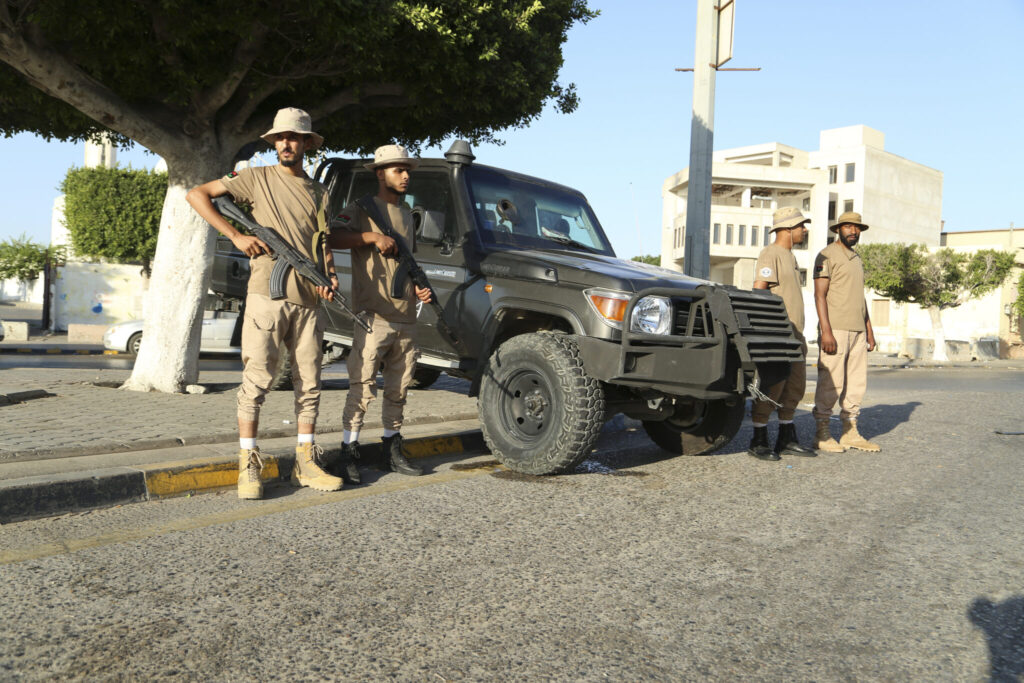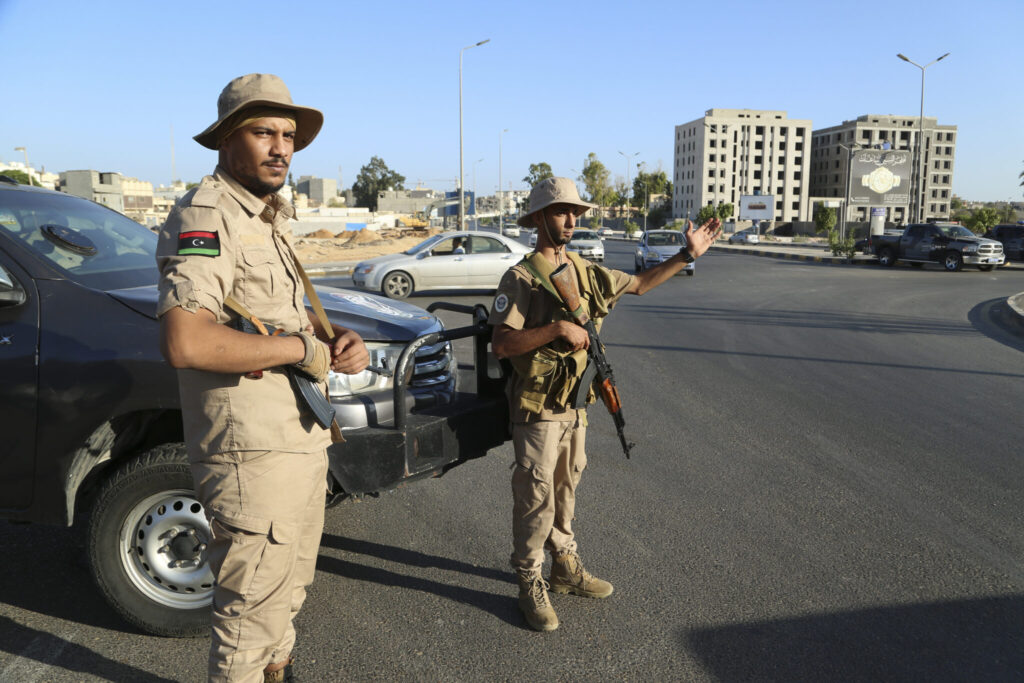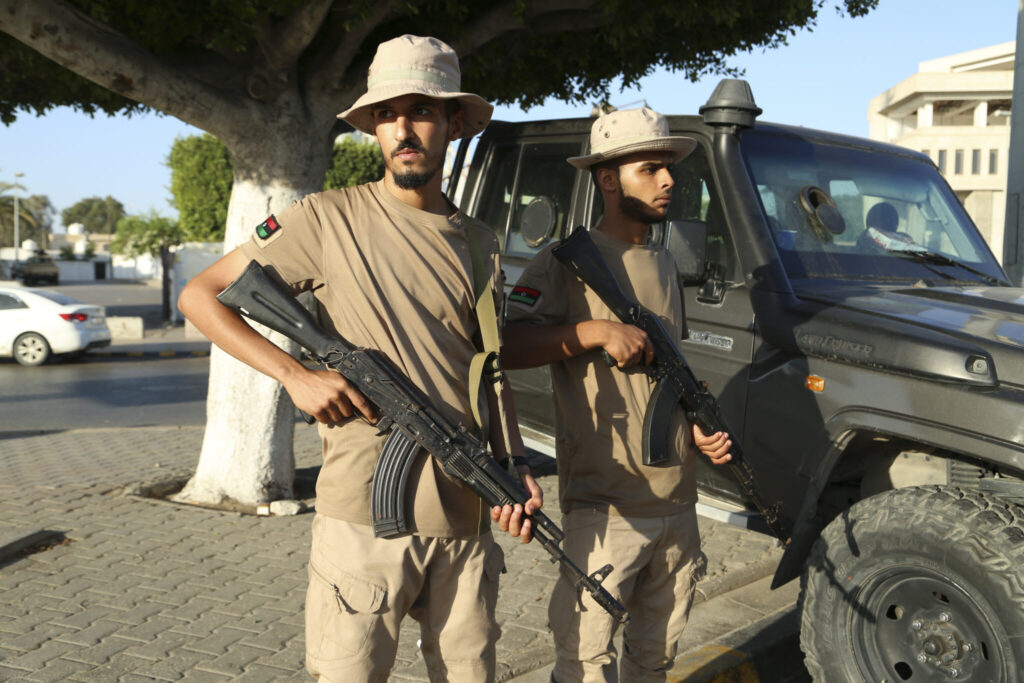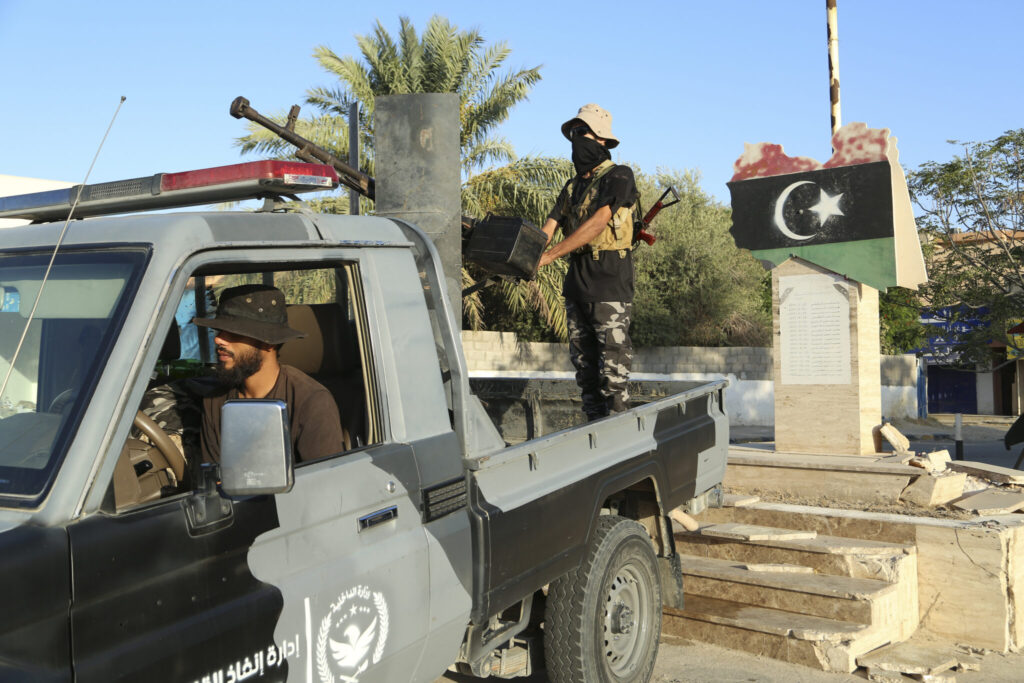The casualty toll from clashes in Libya’s capital Tripoli over 2 days was 55 killed and 146 wounded, the emergency services said. City elders announced late on Tuesday that they had brokered a deal to end Tripoli’s deadliest violence in years with the Special Deterrence Force handing 444 Brigade commander Mahmoud Hamza over to a third faction, the Stability Support Apparatus. Hamza had been seized by the Special Deterrence Force, which controls Mitiga airport, as he attempted to travel on Monday. The Associated Press has the story:
Death toll from militia clashes in Libyan capital jumps to 55
Newslooks- CAIRO (AP)
The toll of people killed during clashes between rival militias in Libya’s capital Tripoli has jumped to at least 55, medical authorities said Wednesday.
Malek Merset, the spokesperson for Libya’s Emergency Medicine and Support Center said an additional 146 were injured, up from 106 reported on Tuesday.
Some 24 hours of clashes between the 444 brigade and the Special Deterrence Force that began Monday appear to be the largest bout of violence to rock Tripoli this year.

Libyan security forces patrolled the streets and fanned out across Tripoli on Wednesday, a day after clashes between rival militias killed at least 27 people in the country’s capital, authorities said.
The fighting was some of the most intense to shake Tripoli this year and in addition to the 27 deaths, over 100 people were wounded, Libya’s Emergency Medicine and Support Center said.
The clashes erupted late on Monday between militiamen from the 444 brigade and the Special Deterrence Force, and continued into Tuesday evening. Tensions flared after Mahmoud Hamza, a senior commander of the 444 brigade, was allegedly detained by the rival group at an airport in Tripoli, according to local media reports. Hamza was later released as part of deal aimed at quelling the violence, the reports said.
It was unclear how many of the dead were militiamen or civilians.

Libya’s Interior Ministry said security forces were deployed to areas where the fighting was most intense, including the southern Fernaj neighborhood and the al-Shouk Road. A situation room was set up to monitor developments though by Wednesday, a tentative calm had returned to the city.
The violence underscored the fragility of the war-torn Libya following the 2011 uprising turned civil war, which toppled and later killed longtime dictator Moammar Gadhafi. Amid the chaos, militias grew in wealth and power, particularly in Tripoli and the west of the country.
Since 2014, Libya has been divided between rival administrations in the east and the west, each supported by an array of well-armed militias and different foreign governments.

Tripoli has seen similar episodes of violence in recent years, although most have only lasted a couple of hours.
“We heard many promises about imminent efforts to promote genuine security sector reform and militia disarmament,” said Jalel Harchaoui, a Libya specialist and associate fellow at the Royal United Services Institute. “No progress whatsoever was made on those fronts.”
The 444 brigade and the Special Deterrence Force are two of the largest militias operating in Tripoli. Both have previously been backed by the administration based there.







